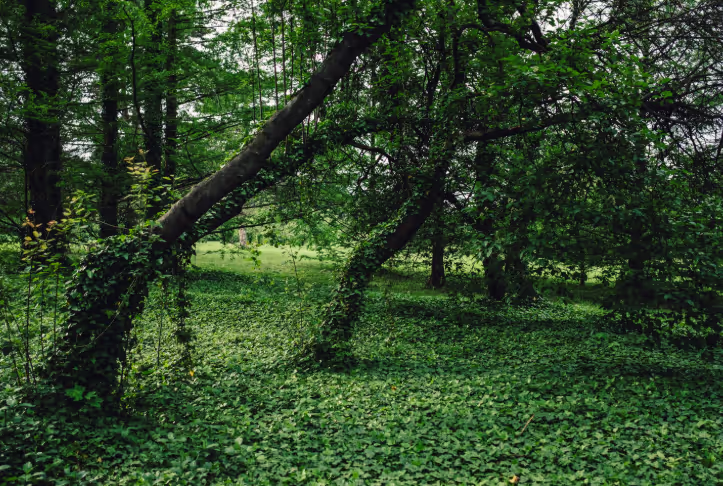Stay informed with our newsletter.
.webp)

.webp)

ABP, the Dutch pension giant, has acquired 70,000 hectares of U.S. forestland as a long-term real-asset investment. The move aims to deliver stable returns from timber while enhancing carbon sequestration, biodiversity, and climate resilience. ABP plans stewardship with certified forestry partners, emphasizing reforestation, habitat management, and wildfire mitigation. The portfolio addition diversifies geography and inflation-hedging exposure, supports rural jobs, and aligns with ABP’s net-zero and ESG commitments, integrating nature-based solutions into its broader investment strategy.

APG has stepped into the driver’s seat of a sprawling 70,000-hectare timber estate in the American South, teaming up with Molpus Woodlands Group to make it happen. It’s not a quiet, behind-the-scenes purchase, either; think of it as a flagship move that blends long-horizon investing with hands-on environmental ambition. Rather than treating the woods as a simple source of logs, the partners are positioning the landscape as living infrastructure, an asset that can yield steady financial returns while steadily improving its ecological health.
At the heart of the game plan is a simple premise with big consequences: set aside more land for nature, protect vulnerable species, and let the forest store more carbon year after year. That means mapping out conservation areas, codifying Forests with Exceptional Conservation Value (FECVs), and aligning harvesting schedules with habitat needs. Trees will still be harvested this is productive timberland, after all but the tempo and techniques will be tuned to the rhythms of wildlife, water, and soil, not just the market.
The deal also ties directly into ABP’s large-scale push on climate and biodiversity. The Dutch pension fund has earmarked roughly €11 billion toward meeting nature-positive and climate-aligned targets by 2030, and this acquisition is a signature example of what that capital is intended to do. It’s a tangible, on-the-ground expression of those goals, tens of thousands of hectares where policy becomes practice, where spreadsheets translate into seedlings, and where risk management meets watershed protection.
Price signals the ambition: at $462 million, this is among the most substantial U.S. timberland transactions in recent memory. That level of commitment sends a clear message to the market: high-quality natural assets, managed with rigor and a long view, are core holdings, not side bets. Timberland has long been valued for its inflation-hedging characteristics and low correlation to traditional assets; layered with climate benefits and biodiversity value, it becomes a multidimensional investment thesis.
The stewardship blueprint is equally assertive. Management intends to increase the forest’s standing carbon by nearly two million tonnes over the next 15 years. That’s not a vague aspiration, it’s a specific, measurable target that requires smart silviculture, careful rotation planning, improved stocking, and attention to species mix and age-class diversity. The climate benefits are straightforward: more living biomass means more carbon drawn out of the atmosphere and locked into trunks, branches, roots, and soils. But there’s a resilience dividend, too. Healthier, more diverse forests are better at withstanding storms, pests, and fire, which protects both ecological values and long-term cash flows.
Molpus Woodlands Group, a seasoned U.S. timberland manager with a reputation for responsible operations, will run day-to-day management. Their role is not merely operational; it’s also innovative. APG and Molpus have introduced an impact-linked performance mechanism that connects a portion of Molpus’s compensation to environmental outcomes. In other words, hitting conservation and carbon targets isn’t just good stewardship, it’s good business for the manager. That alignment aims to prevent the all-too-common problem where sustainability lives in a policy document while incentives live somewhere else entirely.
What counts as success here? The key indicators are refreshingly concrete: build the carbon inventory of the forest and add new conservation zones. Those targets will require coordinated action, restoration plantings, protection of sensitive areas, targeted thinning where it benefits ecological structure, and partnerships with local and regional groups to safeguard at-risk species. The idea is to embed ecological performance into the operating system of the asset, not bolt it on at the end.
Stakeholders have framed the acquisition as a proof point for investing at scale without sacrificing financial discipline. APG’s Americas Private Natural Capital leadership underscores that returns and real-world impact can share the same ledger. The partnership structure puts impact and performance on equal footing, a theme that resonates across the broader transition in natural-capital markets from pilot projects toward institutional-grade platforms.
The designation of FECVs and the expansion of conservation areas will also create a mosaic across the property: zones where harvesting is restricted or excluded, corridors that connect habitats, and working stands that are managed to maintain structural diversity. This mosaic approach enhances species movement, buffers waterways, and supports the long-term productivity of the land. Timber harvesting continues, but it’s paced and patterned to sustain the forest’s ecological engine rather than overtax it.
From ABP’s vantage point, the transaction marks a milestone under its renewed Private Natural Capital mandate: the first large, impact-oriented investment executed at scale, with more to come as the portfolio grows over the next decade. That forward arc matters. Institutional investors are increasingly seeking assets that can withstand climate risk, meet regulatory and stakeholder expectations, and still generate reliable returns. Well-managed forests can do all three, store carbon, shelter biodiversity, and supply renewable materials—provided the incentives are right and management stays rigorous.
In the end, this is more than a land purchase. It’s a blueprint for how big capital can be harnessed to regenerate natural systems while delivering the durability of returns pension funds require. If the carbon climbs, habitats thrive, and cash flows hold steady, this southern U.S. forest may become a reference case for the next wave of nature-based investing where performance is measured in both board feet and birdsong, balance sheets and biodiversity.
For questions or comments write to contactus@bostonbrandmedia.com
Source: knowesg
